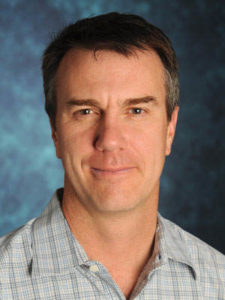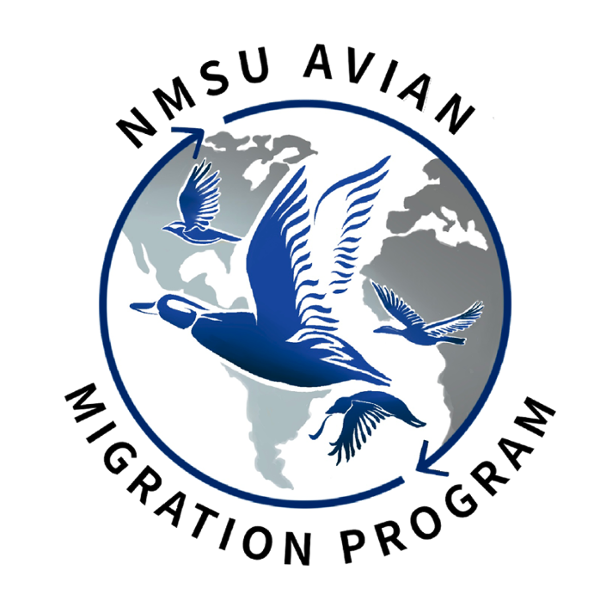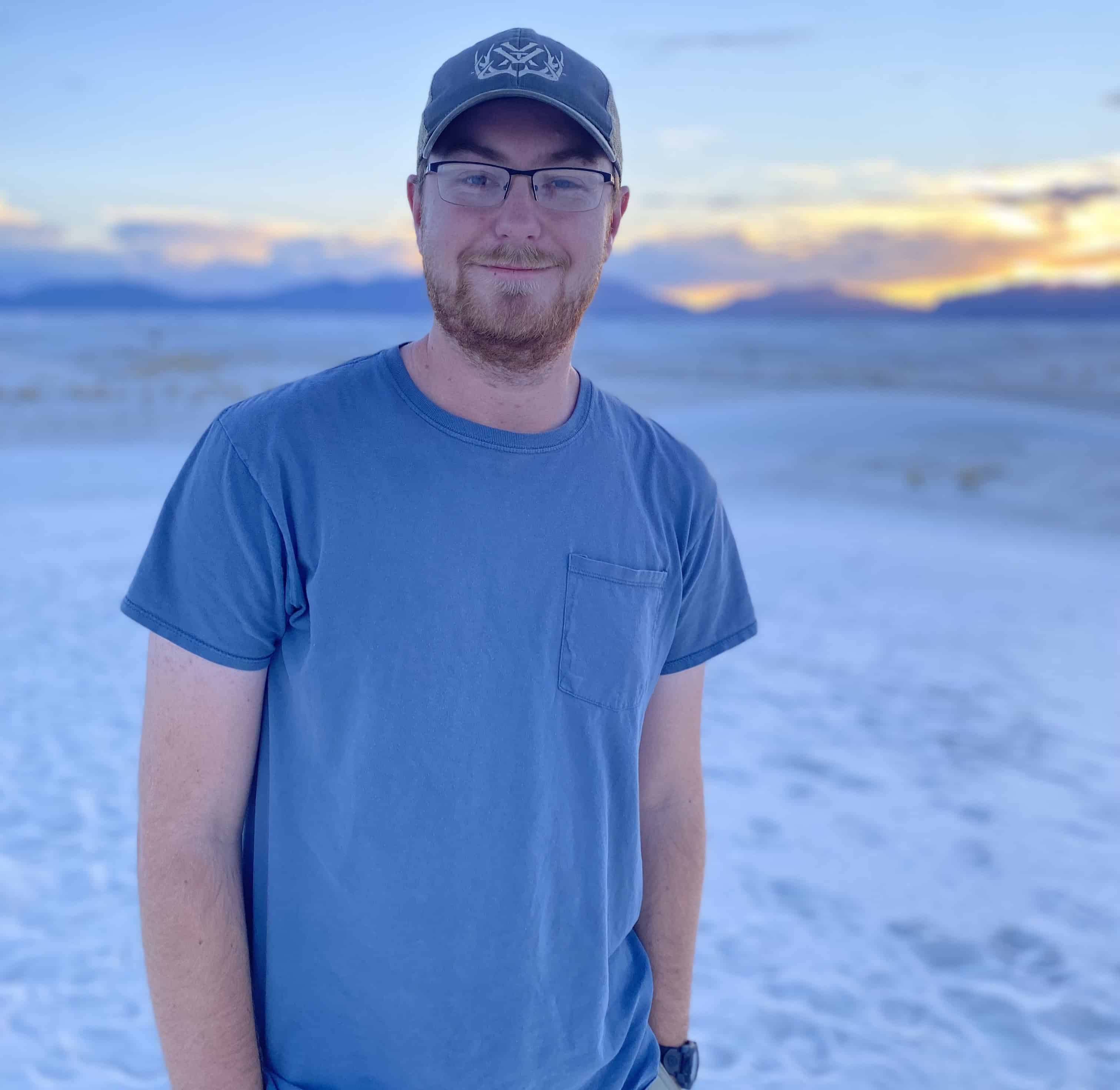
Dylan Osterhaus
PhD Student
M.S. (Fisheries Biology) Iowa State University, 2021 - B.S. (Biology) Emporia State University, 2019
Research Statement: To this point, my research has focused broadly on the implications of anthropogenic alteration of the natural environment for a variety of taxonomic groups including fishes, birds, and mammals. At NMSU, my project is focused on documenting the interaction of migrating birds with artificial light at night at a fine scale using acoustic analysis of flight calls and the quantification of migration using weather radar. This work involves the collection of large datasets of acoustic recordings, which will be analyzed using pre-trained machine learning algorithms for nocturnal flight call detection and classification. With help from collaborators from the Department of Defense, Cornell Lab of Ornithology, and Colorado State University, we hope to determine whether migrating birds are attracted to small sources of artificial light at night in otherwise dark environments. Additionally, I am interested in using weather radar to examine how anthropogenic alterations of water availability in river corridors of the American West may be altering stopover use of these habitats by migrating birds.

Whitney Watson
PhD Candidate
M.S. (Wildlife Ecology) University of Wisconsin – Madison; B.A. (Biology) Macalester College
Research Statement: I am broadly interested in spatial and population ecology of avian species as it pertains to wildlife conservation. Currently, I am investigating the ecology of rosy-finches in northern New Mexico using long term datasets in collaboration with USFWS, NMDFG, and Rio Grande Bird Research, Inc. I aim to estimate survival and abundance using mark-recapture data, evaluate RFID technology as a monitoring tool, and use stable isotope techniques to examine migration ecology of rosy-finches.
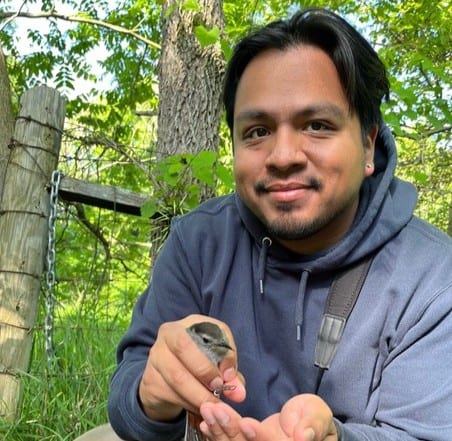
Eriberto Osorio
PhD Candidate
M.S. (Biology) James Madison University
B.S. (Biological Sciences) University of Maryland, Baltimore County
Research Statement: My main interests lie in urban and behavioral ecology, evolution, and conservation. Specifically, I am interested in studying how birds are responding to anthropogenic disturbances and how it can potentially affect their fitness. For my master’s thesis, I investigated how anthropogenic noise can affect gray catbird song across an urban-to-rural gradient. To do this, I conducted a noise playback experiment where I measured their response in both song amplitude and frequency to a simulated urban (low-frequency) noise and a high-frequency noise playback. In my PhD studies, I hope to work in the tropics to continue exploring how different forms of anthropogenic disturbances can potentially affect the learning or cognition of songbirds.
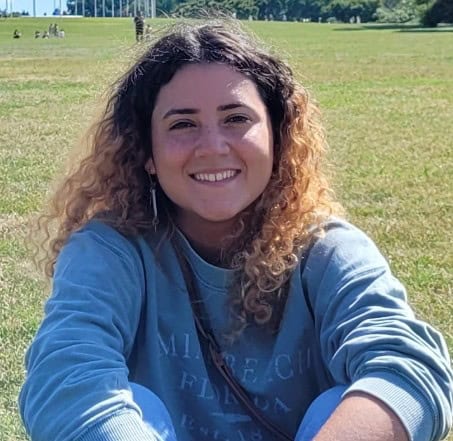
Coral Matos-Sepulveda
MS Student
B.A. College of the Atlantic 2020
coralm@nmsu.edu, coralmatos8@gmail.com
Research Statement: My main interests are in waterbird habitat use, migration, and conservation. The M.S. project I will be working on focuses on Mexican ducks and other dabbling ducks use of stock tanks or diked wetlands. The field work will be conducted in southeastern Arizona during the winter months. Selected ducks will be marked with satellite transmitters to better understand their movement patterns. I will also be a part of NMSU's new Avian Migration Program.

Samantha Aguilar
MS Student
sam1604@nmsu.edu
Research Statement: My interests broadly include avian ecology and conservation, especially within an ever-changing climate. Here at NMSU my research will focus on the post-fledging ecology of Western bluebirds and Ash-throated flycatchers. Specifically, the influence of habitat characteristics on the survival of cavity nesters post-fledge. The work will take place at Los Alamos National Laboratory and involves tracking both species from the time they leave the nest until they disperse or migrate. I hope that this research will help to improve our understanding of post-fledging ecology and the impacts to population dynamics and life history evolution.
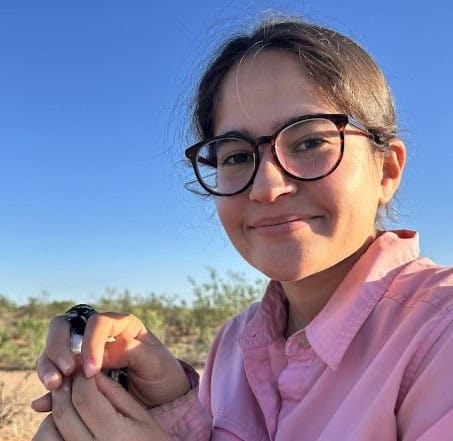
Juliemar Cuevas-Hernandez
MS Student
B.S. (Biology) University of Florida, 2022
Research Statement: I am currently co-advised by Dr. Martha Desmond, Dr. Aaron Young (FWCE), and Dr. Timothy Wright (Biology) and obtaining my MS in FWCE. My research studies how desertification is affecting wintering birds and breeding Black-throated Sparrows (Amphispiza bilineata) at the Jornada Experimental Range in Las Cruces, NM.
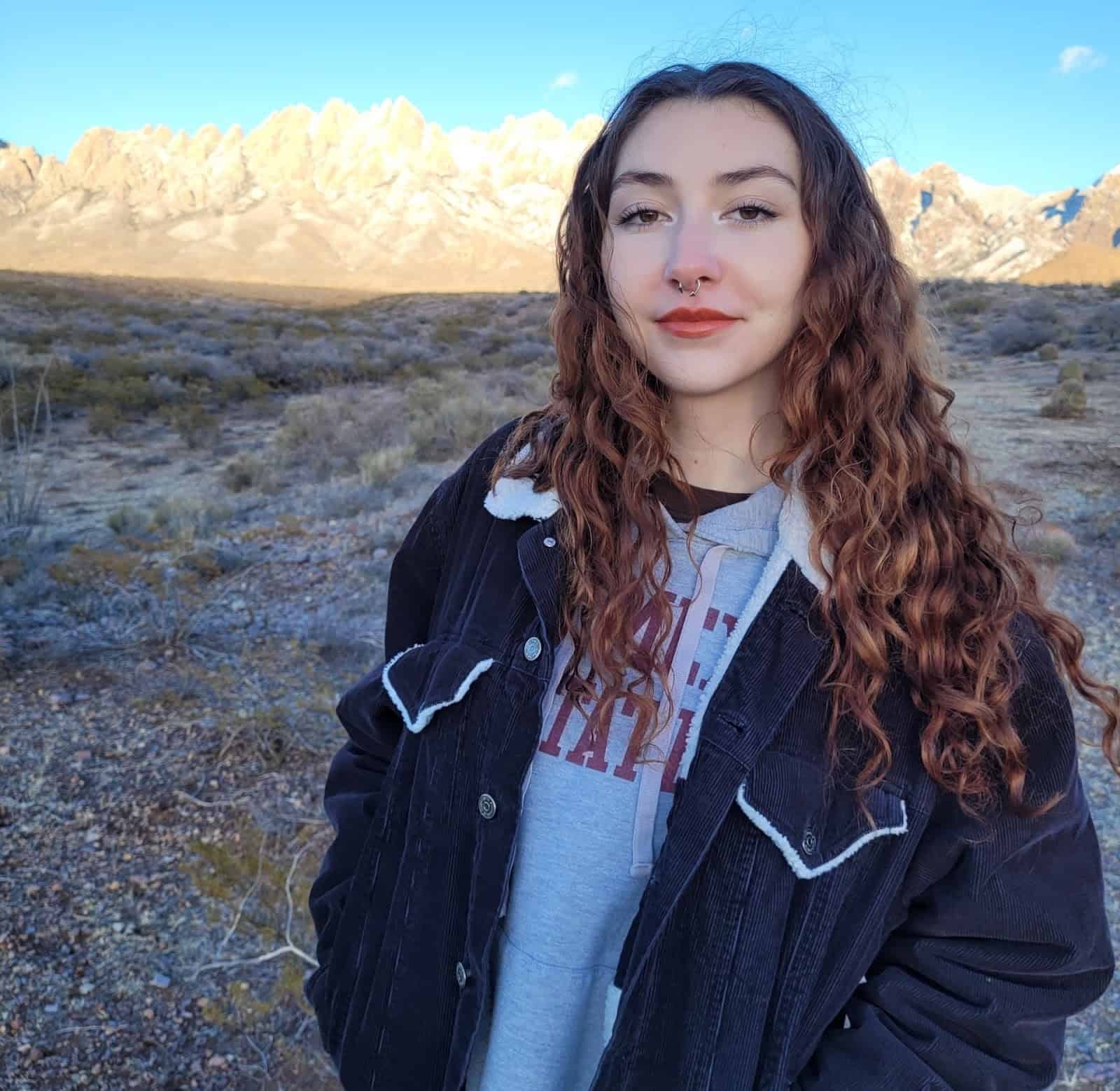
Julianna Diaz
Undergraduate Researcher
Research Statement: In a broad scope, my overall interests lie in conservation initiatives, and better yet how these strategies can be shared with the public in a logical way. I will be working in Dr. Timothy Wright’s lab, studying how migration relates to, and subsequently affects, ecoimmunology within avian species. Through this project I hope to gain a comprehensive understanding on how immune systems provide an insight on proper conservation strategies, and more specifically how avian species are especially susceptible to illness due to the process of migration.
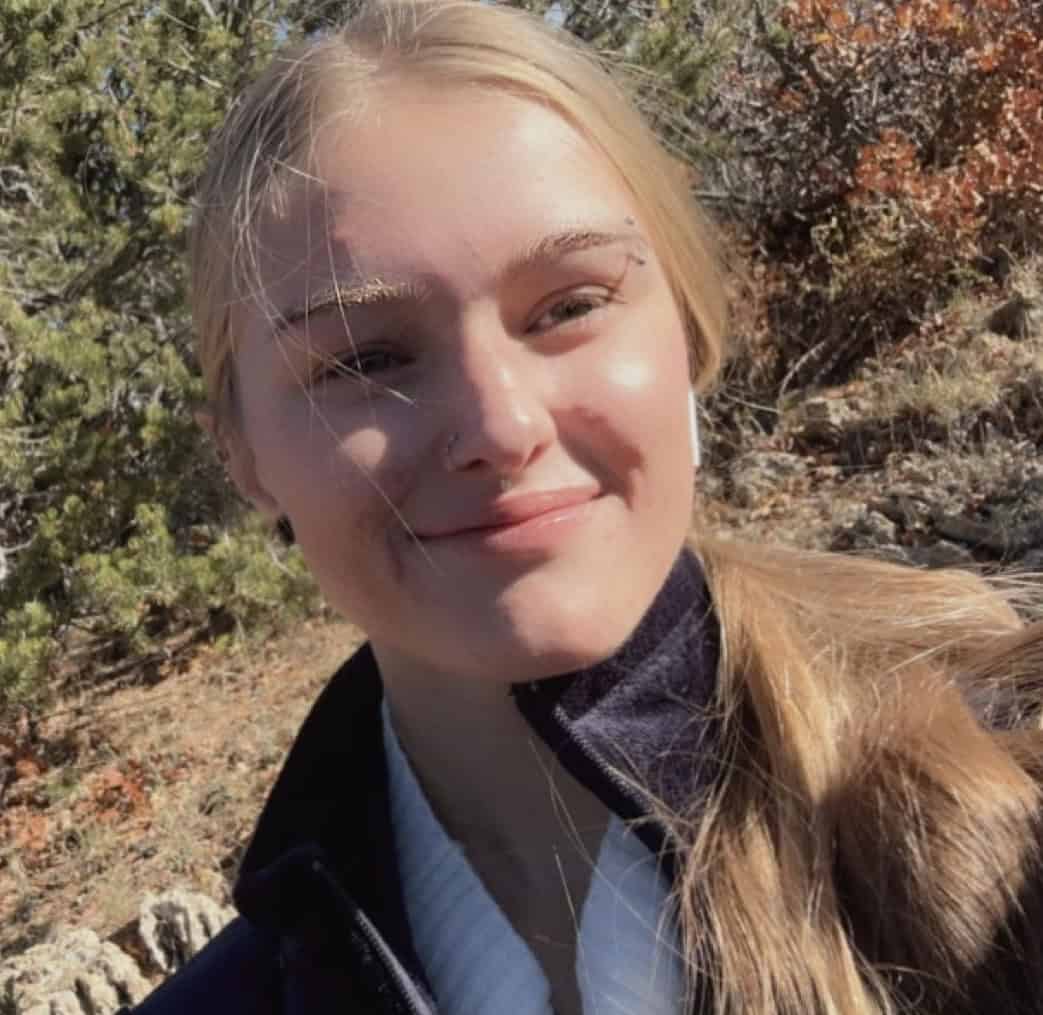
Kadence Presser
Undergraduate Researcher
Research Statement: I am currently working in Dr. Lawson's lab on stable isotope analysis on gray caped rosy finches. My past research experiences include working on the stable isotopes for white ptarmigans to understand their diets. I also have done some building and have run experiments on aquaponic systems. With this opportunity I hope to learn more about the migration patterns of the rosy finches and find out how climate change could affect how far south these birds come to breed. I also hope to find out where exactly these birds are coming from and why the gray caped rosy finches travel farther than the other two species we are studying.
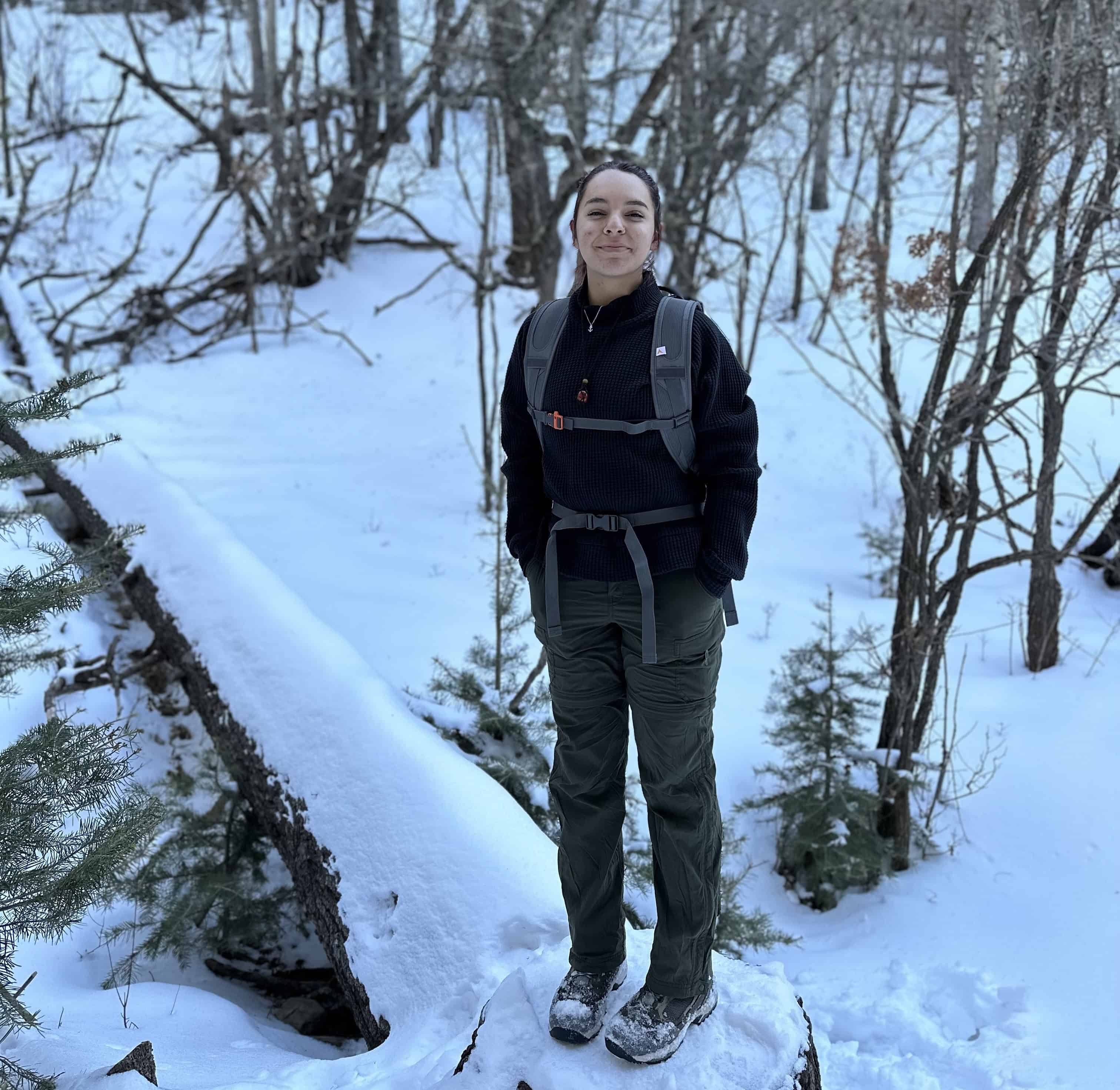
Emma Varela
Undergraduate Researcher
Research Statement: My research interests are primarily focused on avian diets and how breeding success can be influenced by changes in food availability. I am currently working in Dr. Martha Desmond's lab in collaboration with Dr. Jeanne Fair and graduate student Samantha Aguilar on Western bluebird and Ash-throated flycatcher post-fledgling survival rates. My past research experiences have included preparing stable isotope samples to further explore White Ptarmigan diet, studying the reproductive success of American Kestrels in the Mesilla Valley, and conducted Mexican Spotted Owl population/reproductive surveys in response to fires in the Lincoln National Forest.
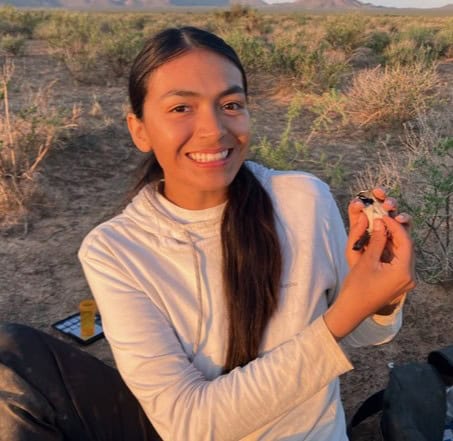
Amyliah Pina
Undergraduate Researcher
Research Statement: My research interests broadly lie in avian ecology and conservation. I am currently involved in the Sparrow Eco-Immunology Project in Dr. Wright’s lab, where we are investigating immune system trade-offs in sparrows that migrate varying distances. This work has deepened my interest in how physiological traits are shaped by ecological demands. Most recently, I worked as a field technician with desert grassland birds, which expanded my interest in how avian species persist in extreme and rapidly changing habitats. I am excited to pursue future research on how birds interact with their environment and how we can protect those interactions in a changing world.
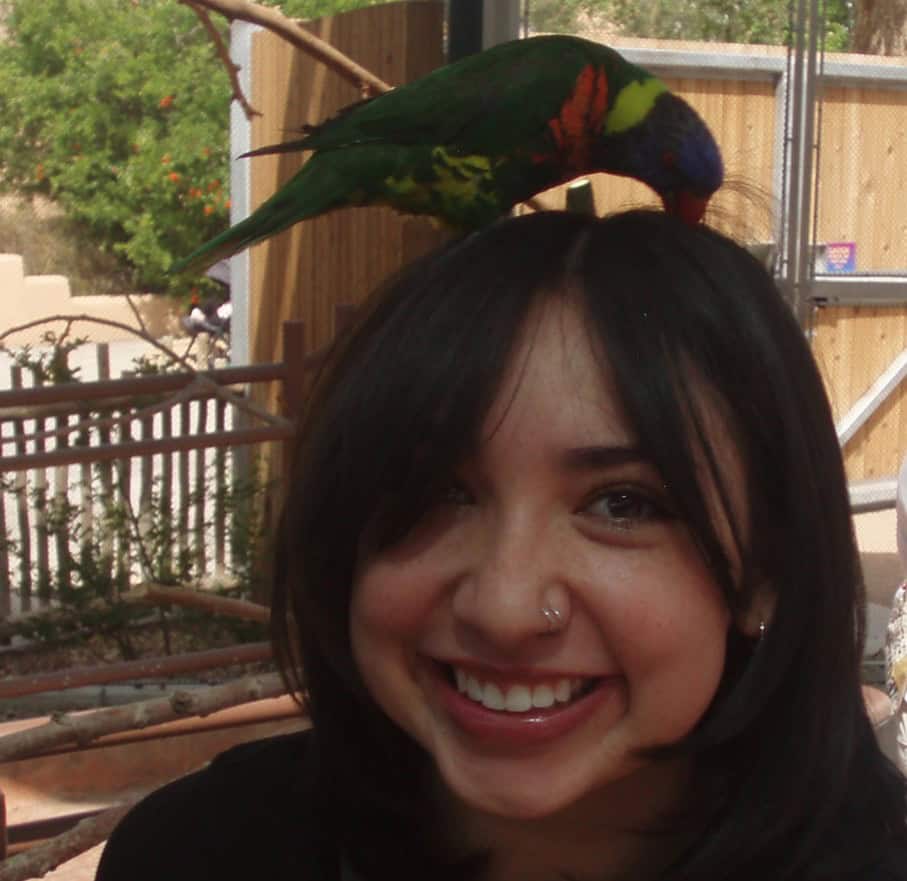
Brynn Mora
Undergraduate Researcher
Research Statement: My research interests focus on the immune function of avian species in response to environmental change. Under the mentorship of Dr. Timothy Wright, I am currently examining the effects of long-distance migration on immune response. This project aims to enhance understanding of the innate immune systems of migratory birds and to explain how the energetic demands of migration contribute to immune suppression and increased susceptibility to pathogens.
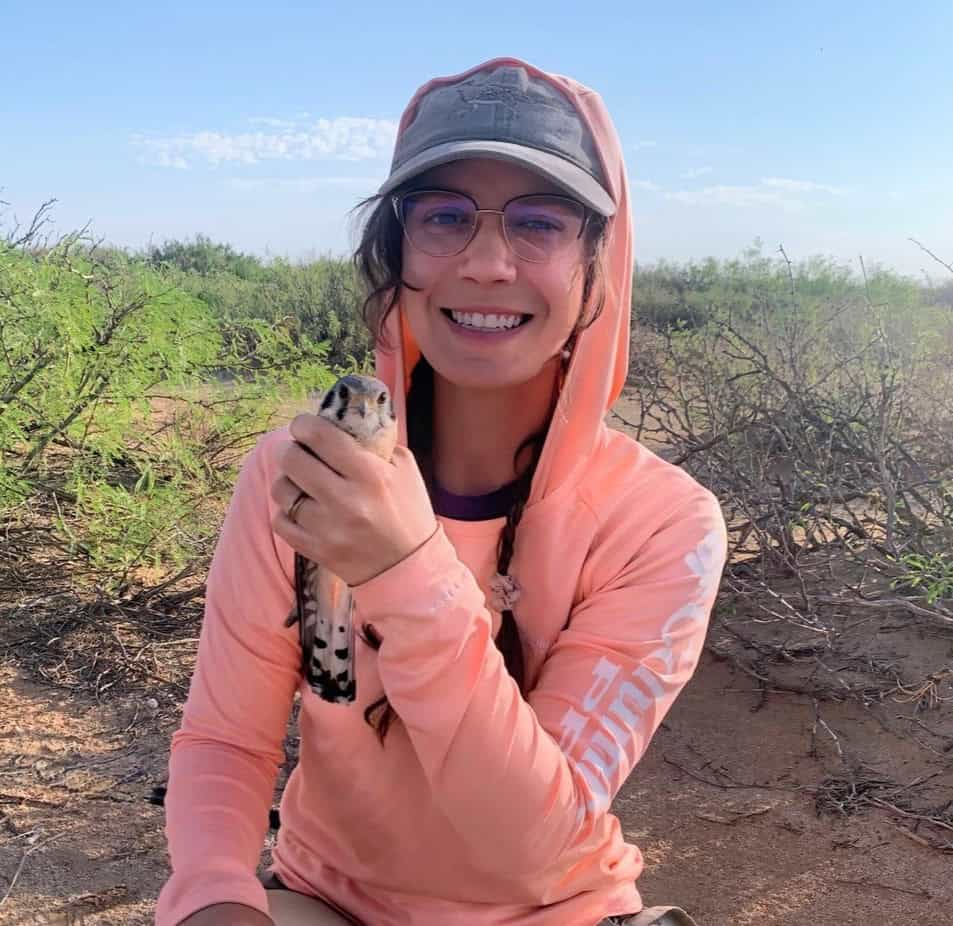
Katie Stansell
Undergraduate Researcher
Research Statement: I am currently working under Dr. Lawson to investigate the impact of human recreation on avian populations using bioacoustics. Past research includes nest box surveys and VHF tracking of juvenile American Kestrels to document their post-fledging movements. Originally from Louisiana, my research interests after graduation will be focused on coastal conservation and the human dimensions of coastal restoration.
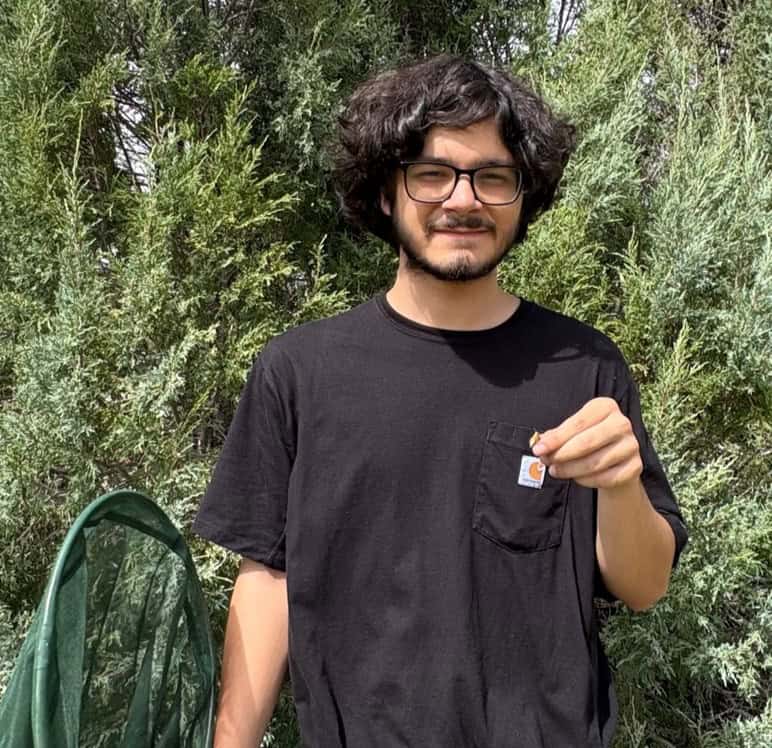
Jeremiah Fierro
Undergraduate Researcher
Research Statement: My main interests are entomology, ornithology, and conservation. I am currently working with Dr. Young to study how the habitats of insects affect insectivorous songbirds during breeding season. I hope to help raise awareness about the much-needed conservation of the wildlife around us and to find ways in which we can help preserve them
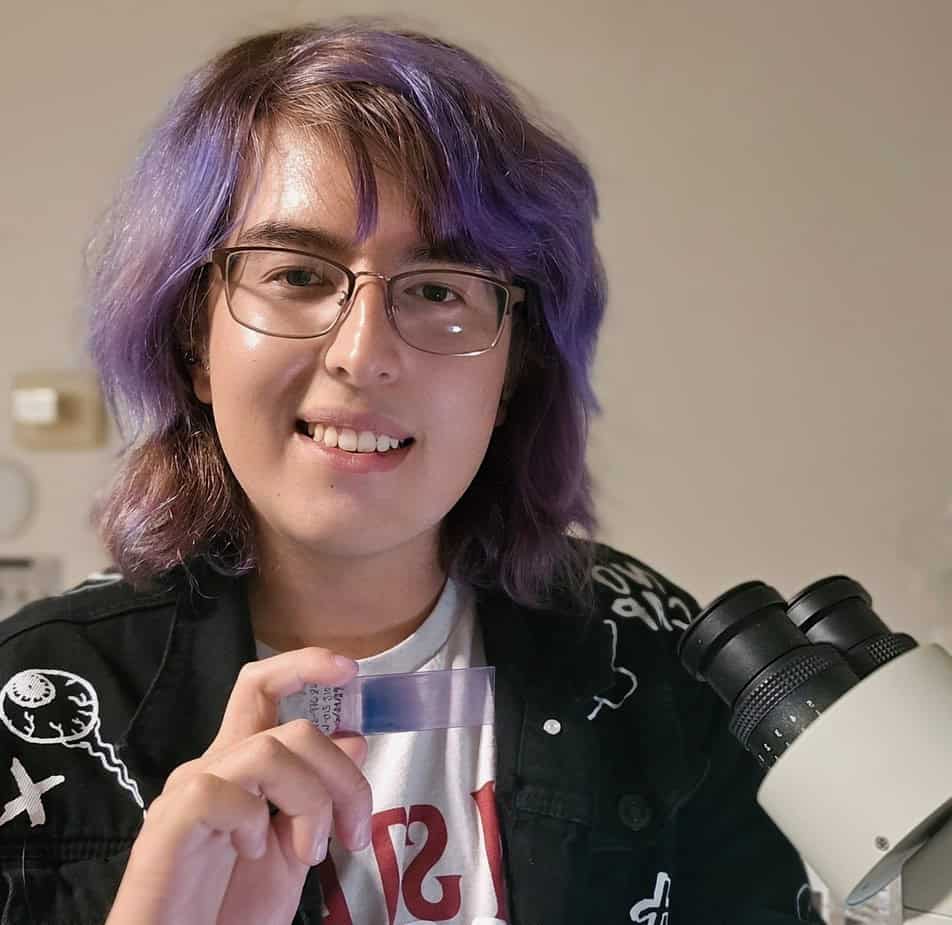
Edward Ortiz
Undergraduate Researcher
Research Statement: I am extremely interested in all things parasites, especially in their unique aspects in respect to birds. Currently I am being advised by Dr. Martha Desmond and working in her lab, with my focus on the gastrointestinal and blood parasite levels in American Kestrels and how it affects juvenile survival rates. I hope to understand more about avian parasites and relate it to Veterinary Medicine, where avian parasites are something less commonly experienced with. My past research experience has been with Juliemar Cuevas-Hernandez and her abundance surveys in the Jordana Experimental Range.
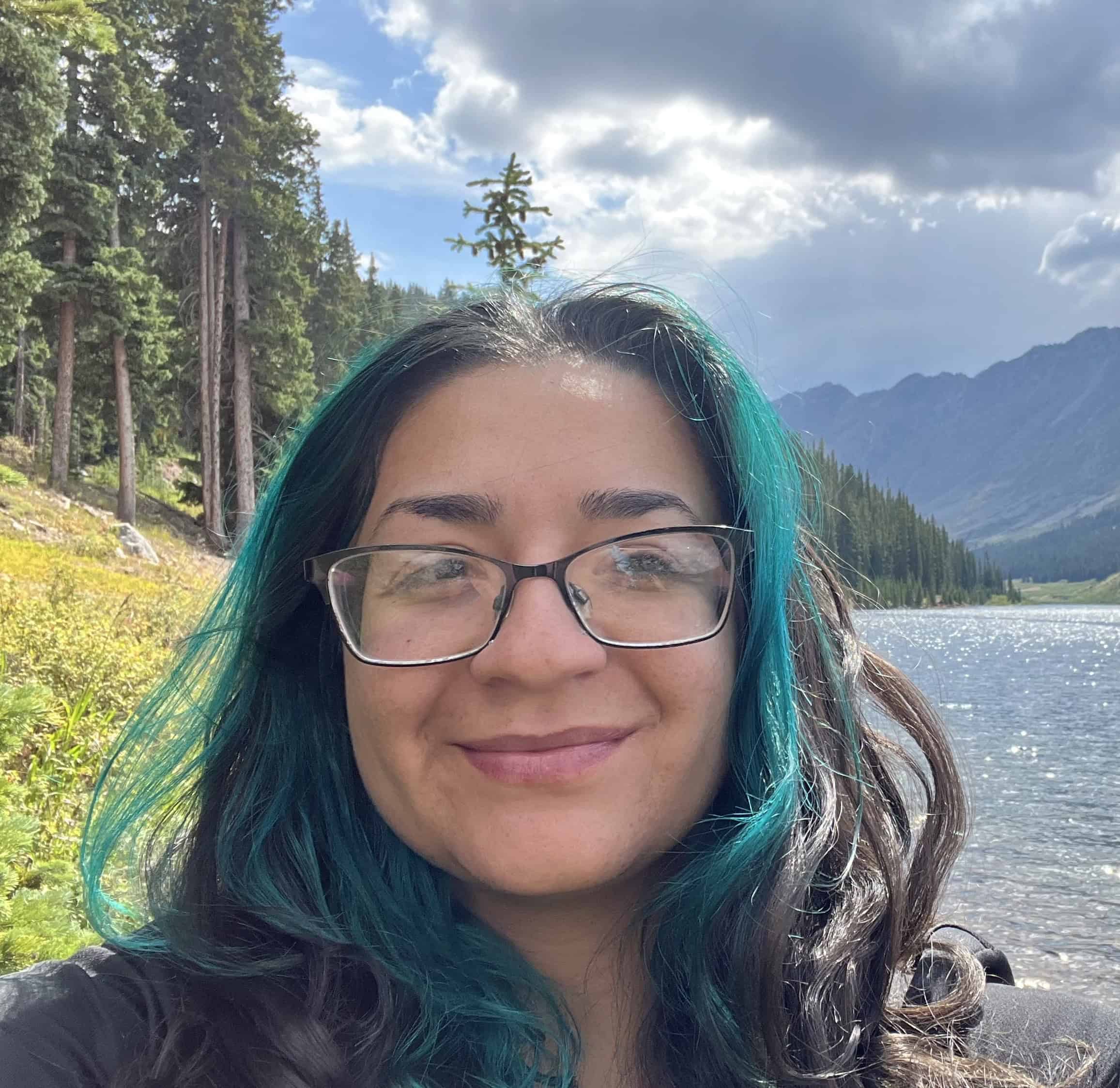
Brianna Perez
Undergraduate Researcher
Research Statement: Through this program I aim to expand my understanding of how diseases and parasites impact migratory and resident avian populations. Currently I am working in Dr. Desmond’s lab as an undergraduate technician, where I assist with the research of fledgling success rates in American Kestrels in Las Cruses and White Sands Missile Range, because of this experience I have a newfound interest in the way disease and parasites are influencing fertility rates in American Kestrels. With this knowledge I am to strengthen my skills in research design, data collection, and analysis.
Alumni
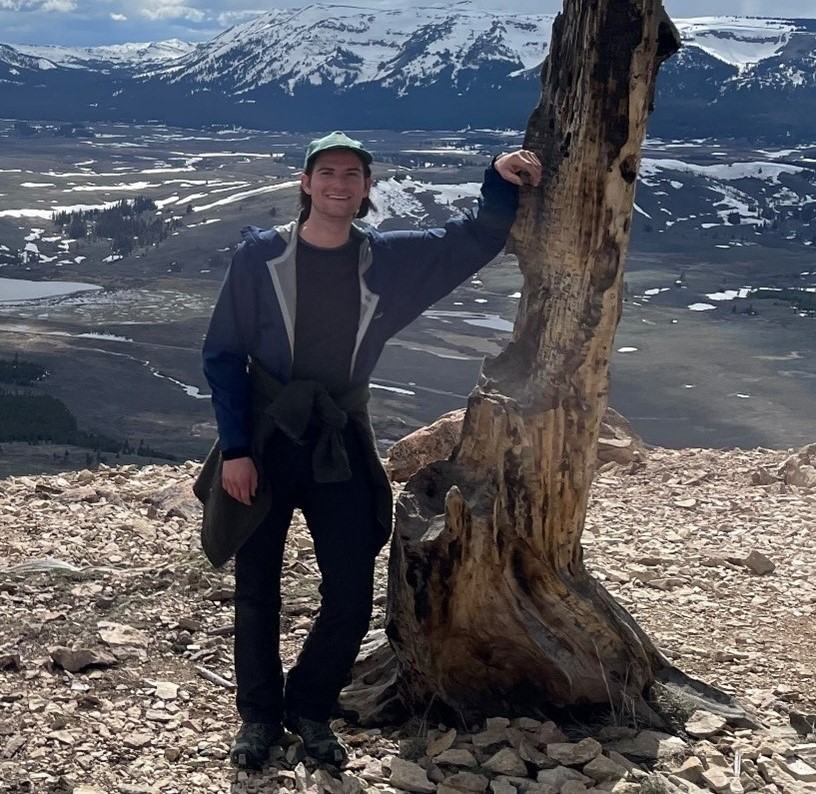
Alexander Allison
MS student
Honors B.S. (Biology) University of Massachusetts – Amherst, 2022
Research Statement: I am passionate about the ability of birds to ignite conservation research. My current work focuses on the critically endangered Great Green Macaw (Ara ambiguus), a flagship species in Central and South America with important roles in both ecological and social spheres. This species is declining throughout its range, and little is known about natal dispersal, a particularly vulnerable life-stage. To fill this knowledge gap, I aim to understand how juveniles spatially integrate into local populations post-fledging. Additionally, my interest in avian communication has led to formation of a second project objective, where I aim to describe patterns of vocal development, social association, and flock formation in juvenile Great Green Macaws. My study area is in northern Costa Rica and I am in collaboration with a local conservation NGO, the Macaw Recovery Network.
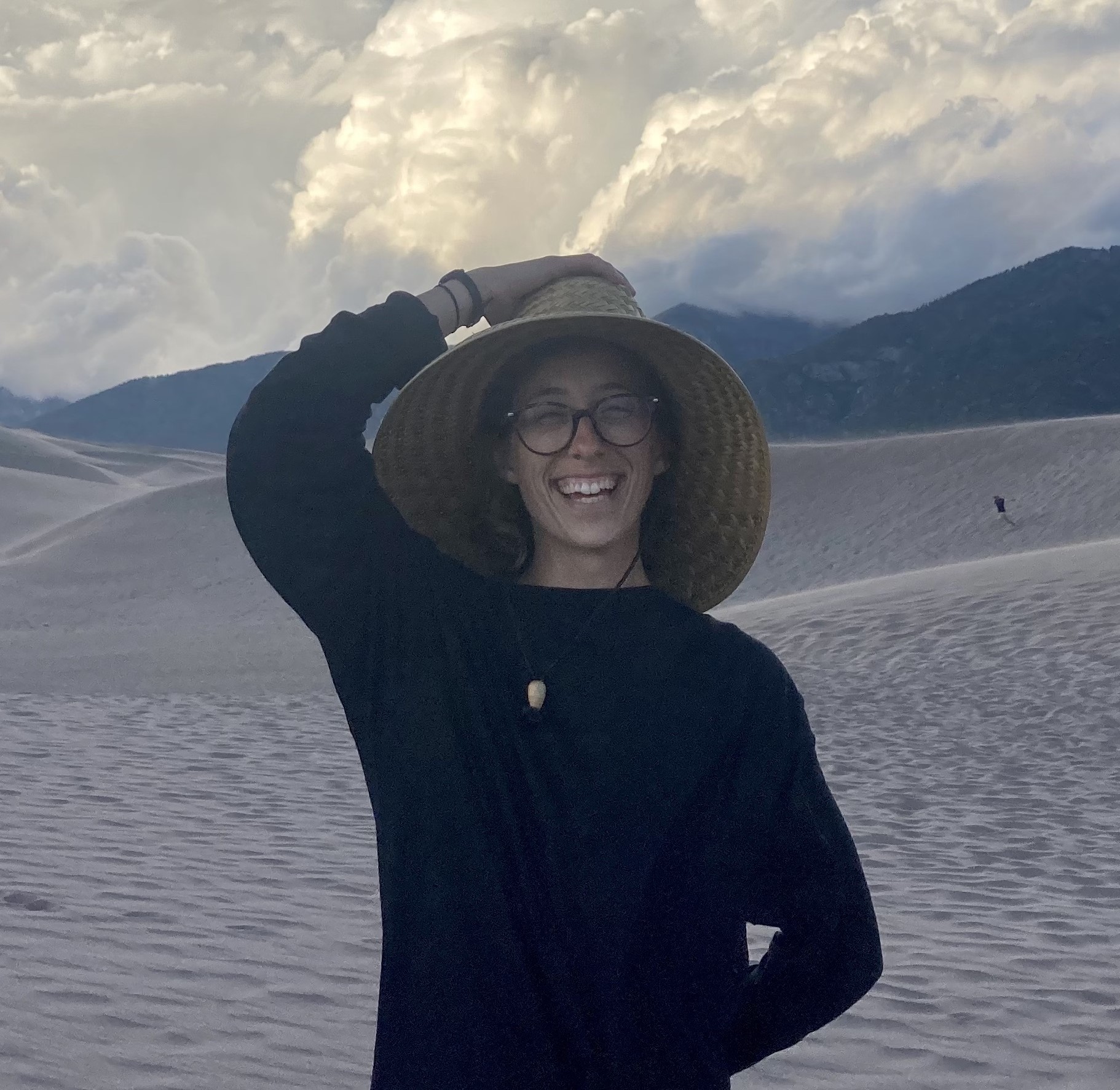
Kelley Boland
MS student
BS (Biology) Cal Poly, San Luis Obispo, CA - 2016
Research Statement: Broadly, I'm interested in applied conservation projects, especially those with an avian focus. Currently, I am working to quantify migratory bird mortality on the White Sands Missile Range, specifically in relation to artificial light at night. My project was really spurred by the 2020 mass mortality event of migratory birds across NM. By conducting standardized carcass surveys during migration using teams of student searchers and scent detection dogs, I hope to be able to determine how many birds die on the range during migration, the impact of artificial light, and the effectiveness of different surveyor types in finding carcasses.
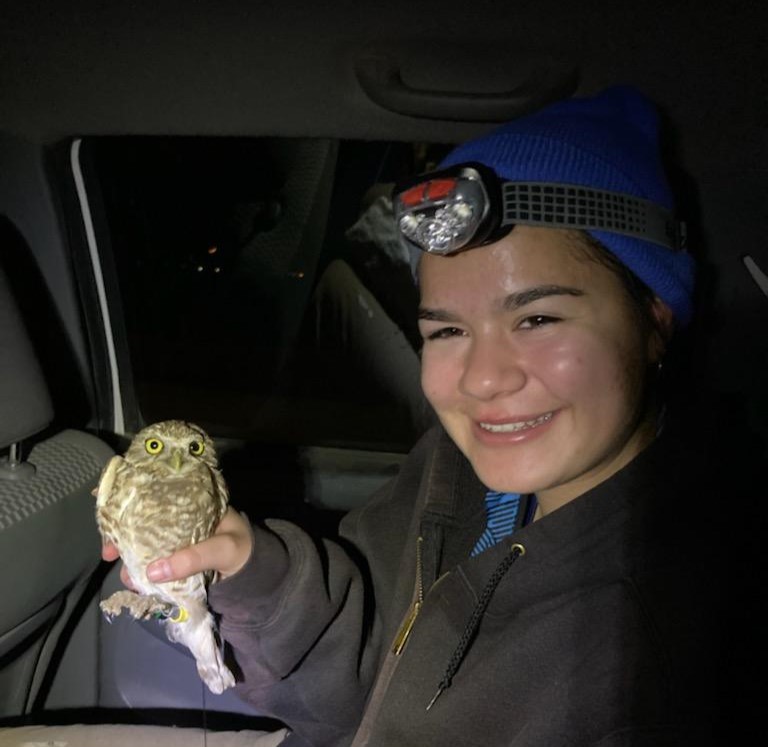
Leona Crowl
Undergraduate Researcher
Research Statement: My broad interest is in raptor conservation. I have past experience as a technician trapping burrowing owls and monitoring Pinyon Jay foraging habits. I will be working with Abby Lawson this year on a project analyzing kestrel nest box data based on historical data collected from across the country in order to identify issues of conservation concern for American Kestrels.
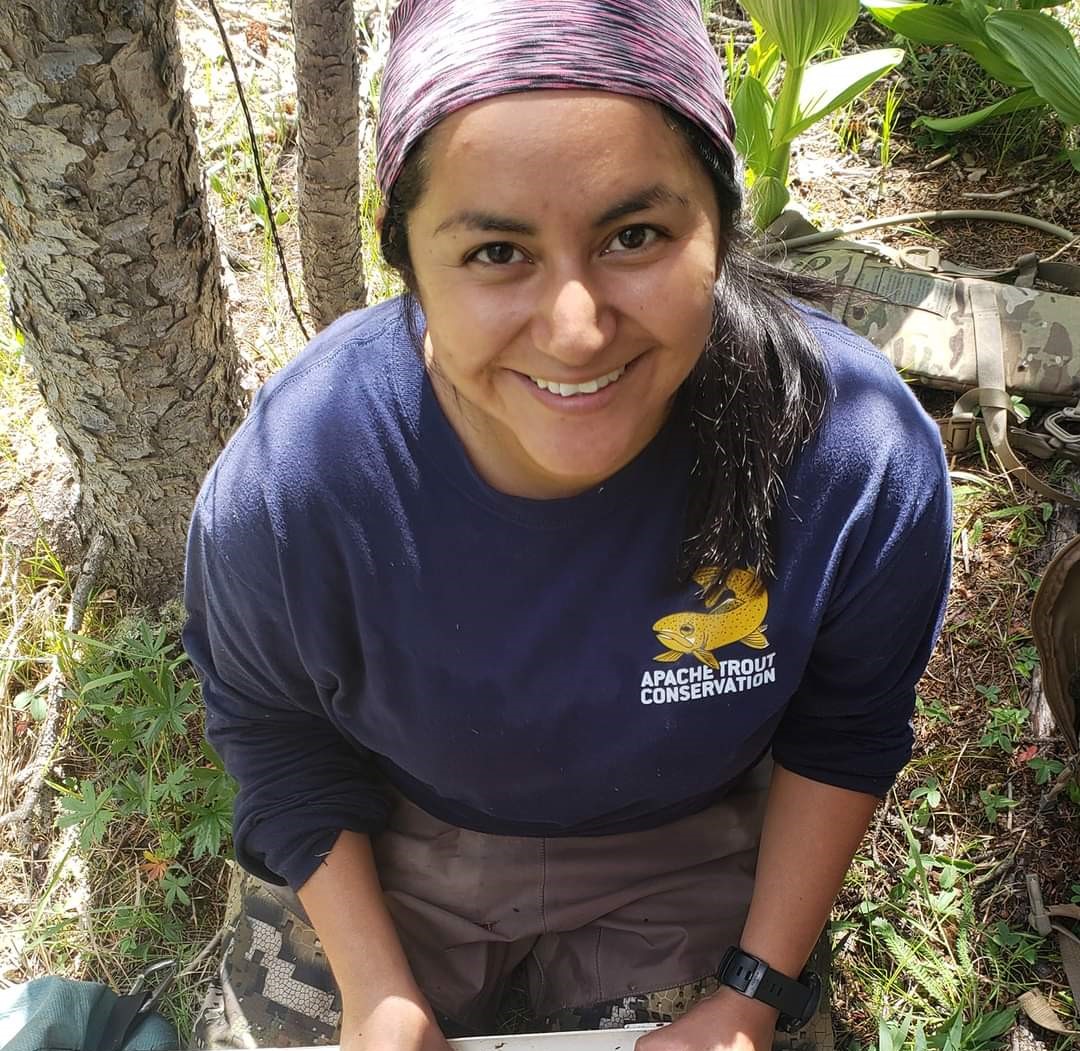
Cynthia Dunkleberger
Undergraduate Researcher

Thomas Huycke
Undergraduate Researcher
Research Statement: Originally from Oklahoma, I am an undergraduate researcher primarily interested in disaster ecology and the effects of anthropogenic disturbances (light pollution, sound pollution, habitat destruction) on avian physiology, mortality, and corridor suitability. My previous experience in Dr. Martha Desmond's lab as an undergraduate technician focused on the determination of localized avian mortality through carcass detection surveys. Under the mentorship of PhD student Dylan Osterhaus, I am currently developing a camera-trapping project that aims to improve the confidence of avian mortality estimation through the determination of a scavenger removal factor.
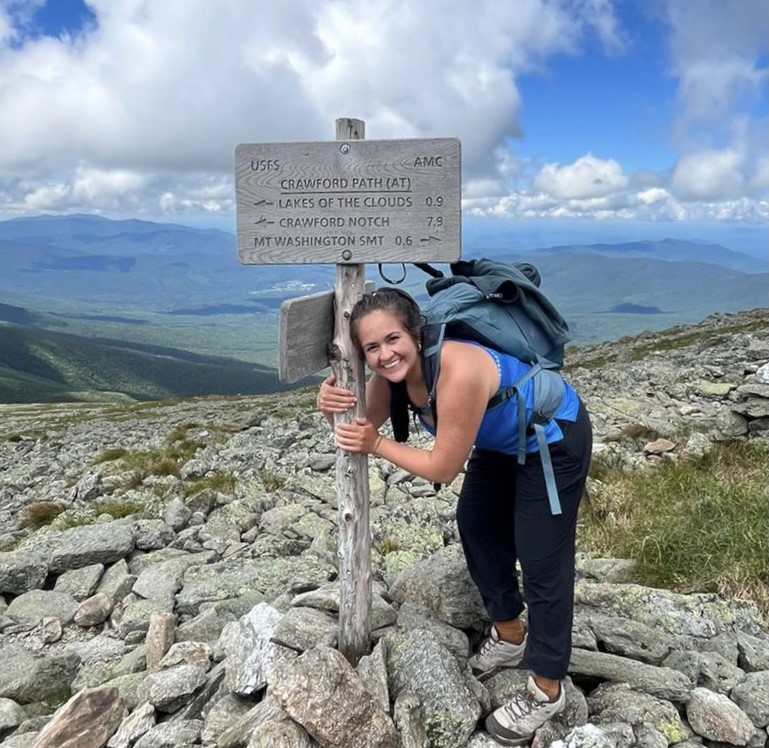
Fatima Quiroz
Undergraduate Researcher
Research Statement: I will be working under the Desmond lab and will conduct my undergrad research around monitoring migratory birds via bioacoustics. My past research experiences have dealt with small mammals, butterflies, and birds. While not directly related to bioacoustics research, these experiences have led me to understand the importance of acoustic ecology and explains my current interest in the acoustic side of research. I aim to further understand migratory bird behavior utilizing microphones and acoustic recording data.
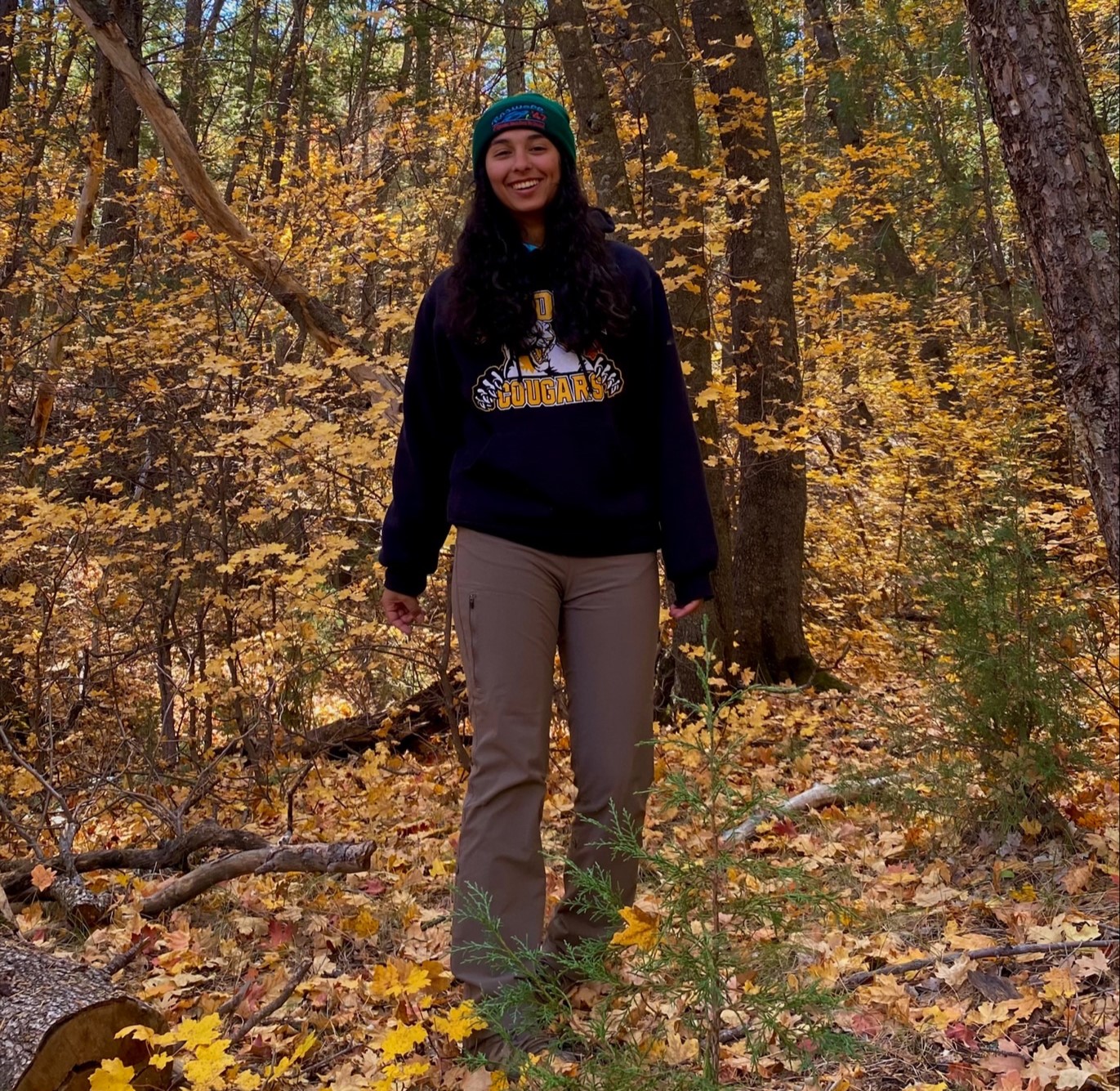
Grace Salmon
Undergraduate Researcher
Research Statement: I am working in Dr. Wright's lab looking at ecoimmunology in three different migratory sparrow species. My past research experience includes working with birds and small mammals in the Lincoln National Forest and Gila National Forest. Through this opportunity, my hope is to understand more about the differences in immune systems between birds that migrate further distances compared to those that migrate shorter distances.
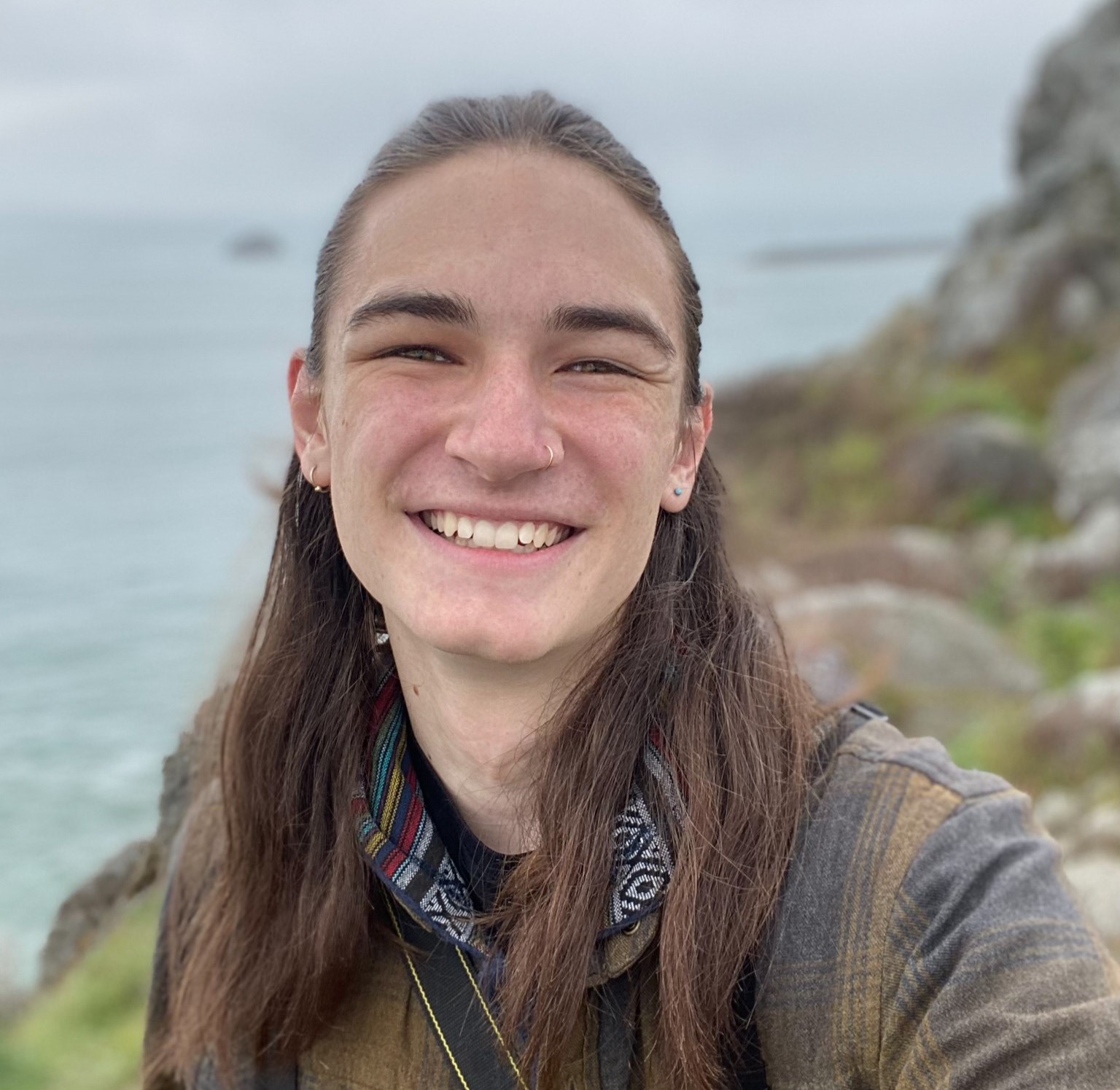
Danny Tipton
Undergraduate Researcher
Research Statement: I am working in Dr. Desmond’s lab working on a project related to American Kestrel nest box occupancy in the Mesilla Valley. My past research experience centers around Bell’s and Gray Vireos in the middle Rio Grande Valley. I’m very interested in migration biology and the increasing challenges surrounding the management of migratory species in our changing climate.
